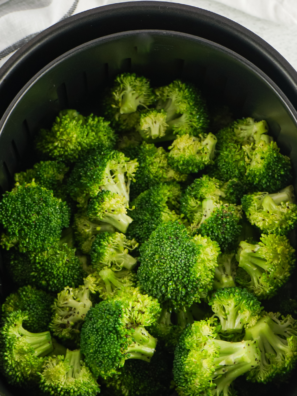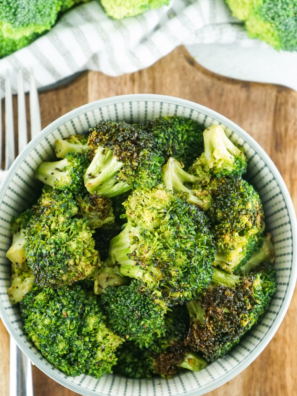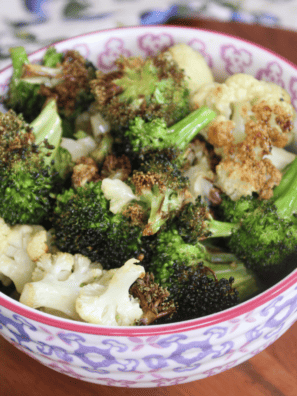How To Cut Broccoli– This is a common question; today, we will learn how to cut broccoli with these step-by-step directions and a detailed guide below.
If you love this easy side dish, we will show you an easy way to cut this versatile vegetable with a few simple steps today.
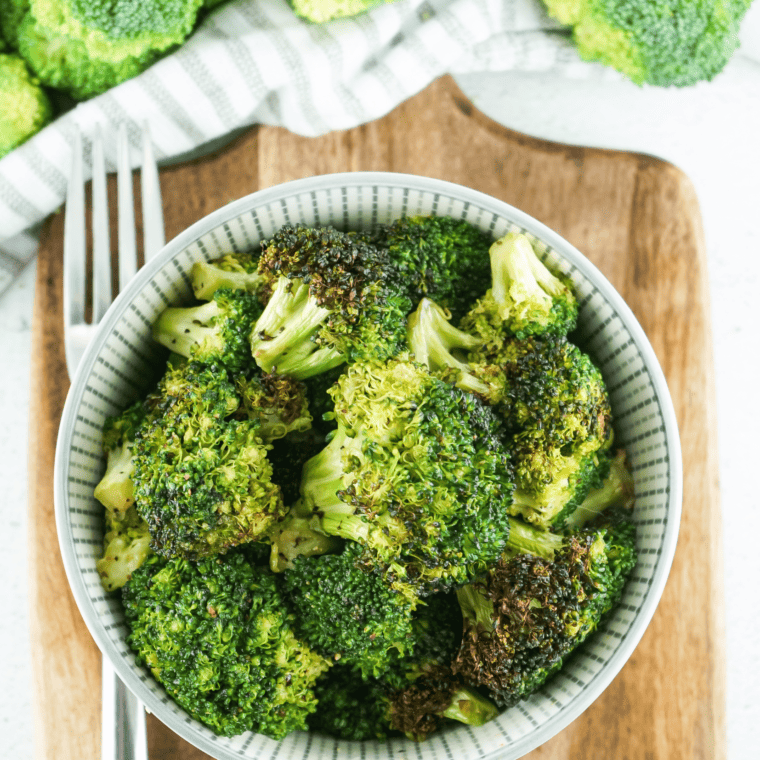
Why Cut Broccoli Head
Cutting a broccoli head allows for more even cooking, easier consumption, and better presentation. The dense structure of a whole broccoli head means that the exterior might overcook before the center becomes tender. Cutting an entire broccoli head into floret stems ensures uniform cooking, whether steaming, air frying, roasting, or sautéing.
Additionally, broccoli florets are more convenient to eat, as you can easily pick up and bite into a floret. Presentation-wise, broccoli florets can be arranged attractively on a plate, making dishes visually appealing. Lastly, cutting helps identify and discard hidden pests or imperfections within the broccoli head.
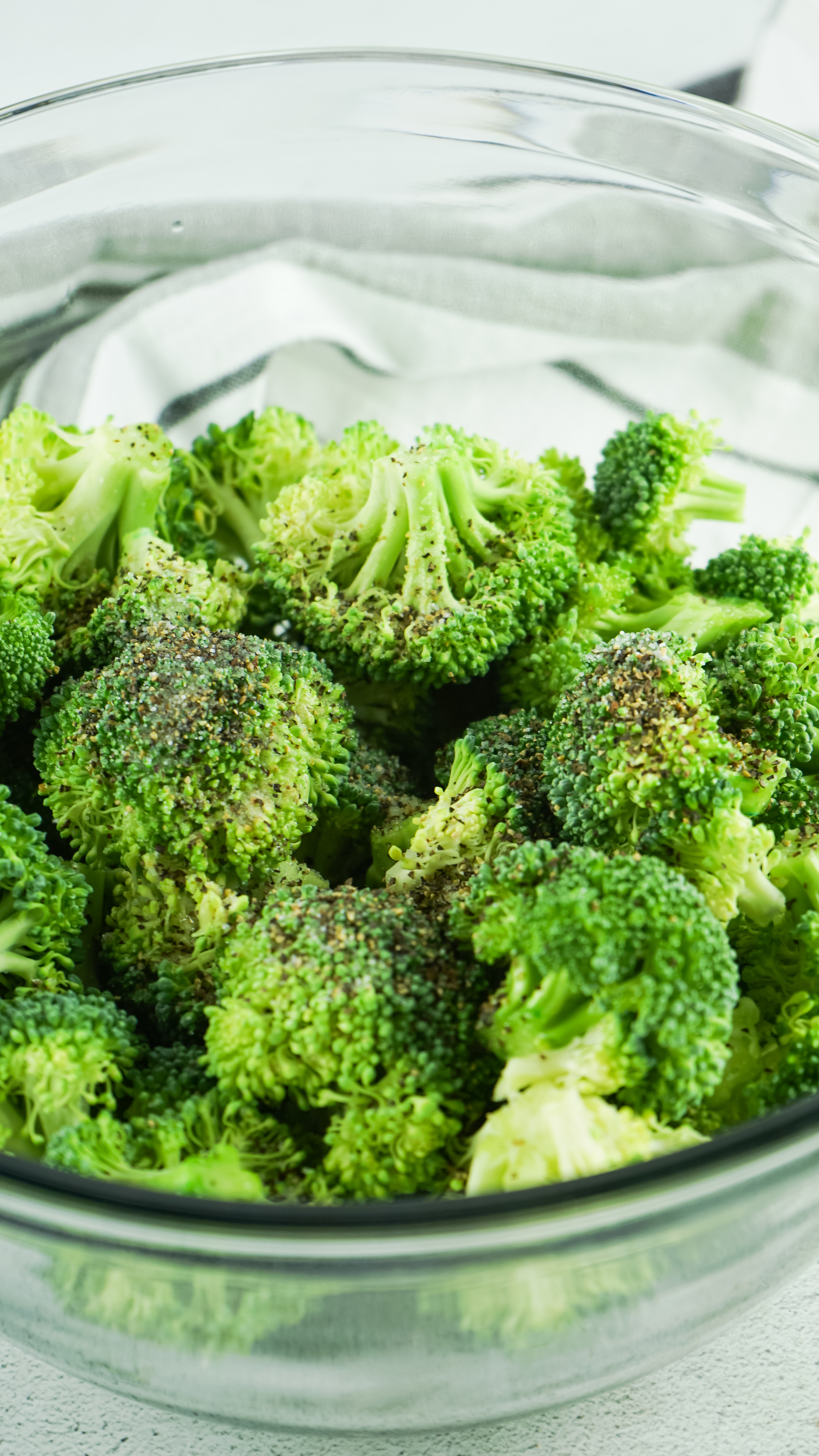
The Easiest Way To Cut Broccoli
Cutting broccoli can seem intimidating due to its unique structure, but you can easily break down this vegetable with a simple technique. Here’s a step-by-step tutorial on the easiest way to cut broccoli:

Wash the Broccoli: Always wash fresh broccoli under cold running water to remove dirt or pests. Place the broccoli on a good cutting board or chopping board.
Trim the Stem: Cut off the thick stem at the base of the broccoli head with a sharp knife or paring knife. Don’t discard this! The broccoli stem is crunchy and delicious when peeled and sliced.
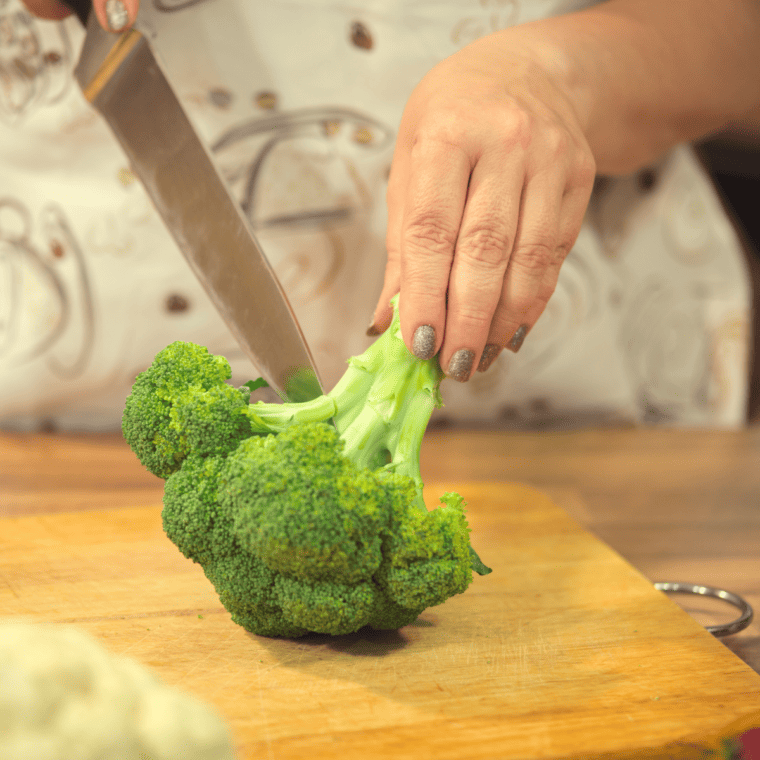
Cut the Florets: Hold the broccoli by the stem, and starting at the outer edge, slice off the florets. They’ll naturally break into individual pieces as thinner stems connect them.
Break Down Larger Florets: If some florets are still too large, cut them into smaller, bite-sized pieces by slicing through the stem.
Prep the Broccoli Stems: While many people discard the broccoli stem, it’s entirely edible and tasty. First, peel off the tough outer layer using a vegetable peeler to use the stem. Then, slice it into rounds or julienne it.
Store or Cook: Once cut, you can store the broccoli florets in a sealed container in the refrigerator for short-term use or cook them as desired.
Following these steps, you can quickly and efficiently prepare broccoli for various dishes, whether roasting it, steaming it, or incorporating it into a broccoli stir fry.
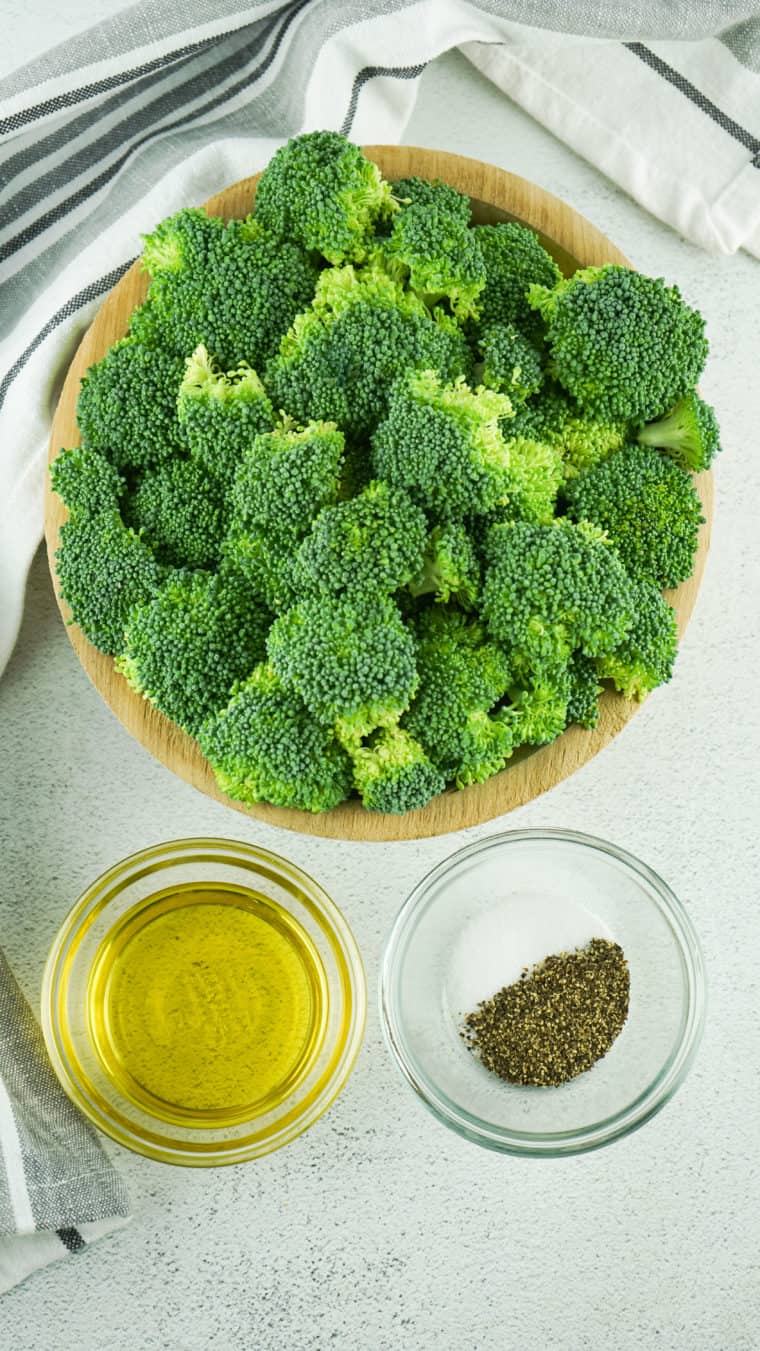
How To Buy Fresh Broccoli
How To Buy Broccoli
When shopping for broccoli, knowing what to look for is essential to ensure you’re getting the freshest and most nutritious. Here are some pointers to guide you through the process:
- Bright Color: Fresh broccoli should have a deep green color. Avoid any broccoli that appears yellow or brown, as this indicates that it’s starting to age or spoil.
- Firm Broccoli Stalks and Florets: Gently squeeze the stem and touch the florets; they should feel firm, not limp or rubbery. Soft stems can be a sign of old broccoli.
- Compact Florets: The florets should be tightly bound together. The broccoli might be past its prime if it is spread out or has flowered.
- Fresh and Green Leaves: If the broccoli comes with leaves, they should be vibrant and green. Wilted or yellowing leaves can indicate older broccoli.
- No Yellow Flowers: Broccoli with tiny yellow flowers blooming from the florets is older and may taste more bitter.
- Check for Mold or Decay: Turn the broccoli around in your hands and inspect it for any moldy spots or brown spots, especially in the nooks and crannies of the floret clusters.
- Size Doesn’t Determine Quality: While many might gravitate towards larger heads of broccoli, size doesn’t necessarily determine the quality or taste. However, choosing uniformly sized heads is helpful if you plan to cook them together to ensure even cooking.
- Organic or Conventional: Consider buying organic broccoli to avoid potential pesticide residues. If you choose to buy conventional, make sure to wash it thoroughly.
- Seasonality: While broccoli is available year-round in most places, its peak season is during the cooler months, from late fall to early spring. During this time, you might find the best quality and prices.
In summary, go for firm, green, and mold-free bunches without yellowing or flowering when purchasing broccoli. Remember, freshness is key to getting the most out of this nutritious vegetable, both in terms of flavor and health benefits.
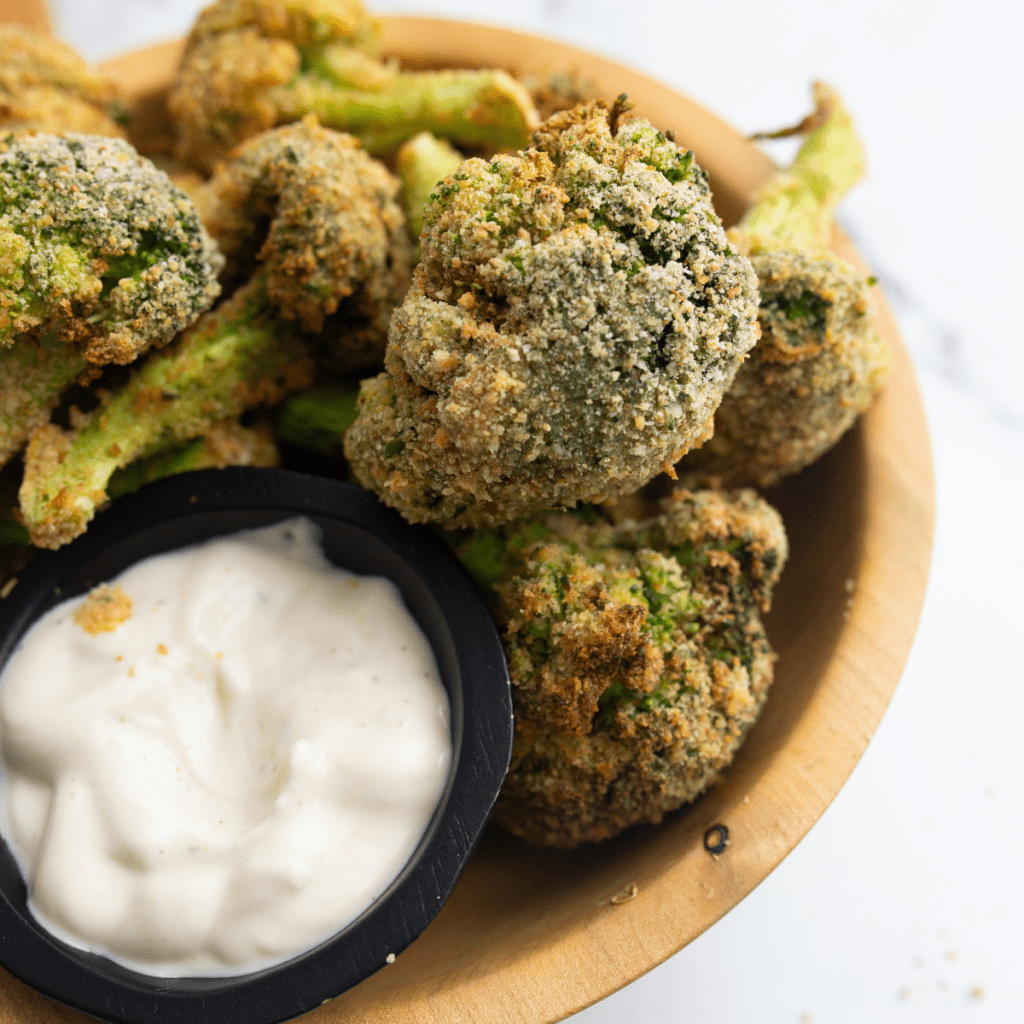
How To Store Broccoli
Proper storage of broccoli is essential to maintain its freshness, nutritional value, and flavor. Here’s a step-by-step guide on how to store broccoli, after you come home from the grocery store:
Don’t Wash Before Storing: It’s crucial not to wash broccoli before storing it, as excess moisture can encourage mold and rot. Instead, wait to wash it until you’re ready to use it.
Dry Method:
Wrap the unwashed broccoli loosely in damp paper towels. Put it in a plastic bag, leaving it open slightly for air circulation. Store in the vegetable crisper drawer of the refrigerator.
Glass Container Method: Place unwashed broccoli in a glass container. Cover it with a lid, but ensure there’s a small gap to allow some airflow. Store the container in the fridge.
Plastic Bag Method: Put the unwashed broccoli in a plastic produce bag. Make a few small holes in the bag for ventilation. This allows some moisture to escape, which can help prevent mold growth. Store it in the vegetable crisper drawer of the refrigerator.
Broccoli Florets: If you’ve cut the broccoli into florets, store them in airtight containers or zip-top bags. Remove as much air as possible before sealing. Store in the refrigerator.
Long-Term Storage: For longer-term storage, consider blanching and freezing the broccoli. To do this, wash the broccoli crown in cold water and cut it into florets. Boil for 3 minutes, then immediately transfer to ice water to halt the cooking process. Once cooled, drain and pat dry. Spread the florets on a baking sheet and freeze until solid. Once frozen, transfer them to freezer bags, remove excess air, and store them.

Pro Tips For Cutting Broccoli
Properly cutting broccoli can make a big difference in the cooking process and the final dish presentation. Here are some pro tips for cutting broccoli:
- Use a Sharp Knife: A sharp chef’s knife ensures clean cuts and prevents the broccoli from getting crushed, which can lead to loss of nutrients.
- Cut at an Angle: Cut the broccoli stem at a slight angle when trimming it. This helps expose more of the tender inner part of the stem.
- Preserve the Stalk: Many people discard it, but it’s as nutritious and flavorful as the florets. After peeling away the tough outer layer, the stalk can be diced or julienned and added to stir-fries, soups, or salads.
- Uniform Floret Size: For even cooking, especially when roasting or steaming, ensure that the broccoli florets are cut to roughly the same size.
- Minimize Waste: Instead of cutting the florets off directly, turn the broccoli upside down and cut from the stem side. This approach can help you get closer to the base of each floret, reducing waste.
- Rinse After Cutting: Sometimes, small broccoli worms or pests can hide deep within the florets. To ensure they’re removed, cut your broccoli first, soak the cut pieces in salt water or vinegar water for a few minutes, and rinse them under cold running water.
- Flat Base: After cutting off the florets, create a flat base on the stem. This makes it stable on the cutting board, allowing easier and safer slicing or dicing.
- Safety First: When cutting the stalk or making intricate cuts, always use a claw grip with your free hand to protect your fingers.
- Use the Leaves: Broccoli leaves are edible! They can be chopped and added to salads or sautéed like kale or spinach.
- Storage: If you’re not using the cut broccoli immediately, store it in a container with a paper towel to absorb any excess moisture. This will help prolong its freshness in the refrigerator.
With these pro tips, you can handle broccoli like a chef and make the most of this nutritious vegetable!

FAQ’s Perfectly Cutting Broccoli Head
Should I wash broccoli before cutting?
Washing raw broccoli to remove dirt or pesticides before cutting is always a good idea. However, to remove any pests hidden deep within the florets, it’s beneficial to cut the broccoli first and then soak and rinse it.
Can I eat the broccoli stem? Absolutely! The stem is just as nutritious and flavorful as the florets. Once the tough outer layer is peeled away, various dishes can consume the stem.
How do I store cut broccoli? Cut broccoli should be stored in an airtight container in the refrigerator. If you’re storing it for more than a day, placing a paper towel inside the container can help absorb excess moisture and keep the broccoli fresh.
How long does cut broccoli last in the fridge? Cut broccoli can last for about 3-5 days. If it smells bad or the color darkens significantly, it’s best to toss it.
Is it necessary to soak broccoli in salt or vinegar water after cutting? While unnecessary, soaking cut broccoli in salt or vinegar water can help remove pests hiding in the florets. It’s a useful step, especially if you’ve noticed worms or bugs in your broccoli.
Why are some broccoli stems so tough? The outer layer of broccoli stems is fibrous and tough, especially in giant, more mature broccoli. Peeling or trimming this outer layer will reveal a tender inner stem that’s delicious and easy to eat.
Are broccoli leaves edible? Yes, broccoli leaves are entirely edible! They can be treated similarly to leafy greens like kale or spinach and can be a tasty addition to various dishes.
What can I make with leftover broccoli stems? Leftover broccoli stems can be used in various dishes. They can be sliced and added to stir-fries, grated into slaws, diced into soups, or even blended into smoothies or juices.
How can I ensure even cooking of broccoli in dishes? Cut the broccoli florets to roughly the same size to ensure even cooking, especially when roasting or steaming.
Does broccoli lose its nutrients when cut? While there might be a minimal loss of nutrients immediately after cutting, most of the broccoli’s beneficial nutrients remain intact. It’s more about how you cook it: steaming or microwaving broccoli is the best way to retain its nutritional content while boiling can cause a significant loss of vitamins and minerals.
Favorite Broccoli Recipes
- Air Fryer Sheet Pan Dinners Broccoli and Chicken
- Air Fryer Broccoli Rabe
- Instant Pot Broccoli Soup
- Air Fryer Broccoli Stir-Fry
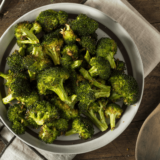
How To Cut Broccoli
Description
Ingredients
- 1 large broccoli head
- 2 tbsp olive oil, optional: melted butter
- Salt, to taste
- Freshly ground black pepper, to taste
- Seasonings garlic powder, garlic powder, red pepper flakes, grated Parmesan cheese
Instructions
- Preparation: Wash the broccoli head under cold water. Pat it dry with paper towels.
- Trimming: Using a sharp knife, cut off the broccoli stem close to the base of the crown. If the outer layer of the stem is tough, peel it using a vegetable peeler.
- Floret Cutting: Slice the broccoli crown into individual florets. For larger florets, you can split them down the middle into smaller, bite-sized pieces.
- Cooking:
- Boiling: Bring a pot of water to boil, add a pinch of salt. Add broccoli and cook for 3-5 minutes until tender but crisp. Drain and season.
- Steaming: Use a steamer or place broccoli in a metal colander over a pot of boiling water. Cover and steam for 4-6 minutes.
- Roasting: Preheat oven to 425°F (220°C). Toss broccoli florets in olive oil and desired seasonings. Spread on a baking sheet in a single layer. Roast for 20-25 minutes, stirring halfway, until edges are crispy and slightly browned.
- Sautéing: In a skillet over medium heat, add olive oil. Once hot, add broccoli florets. Sauté for 5-7 minutes, stirring occasionally, until tender and slightly caramelized. Season with salt, pepper, and optional seasonings.
- Serving: Serve the broccoli warm. Sprinkle with optional grated Parmesan cheese or a squeeze of lemon juice for added flavor.
Equipment
- Cutting Board
- Sharp Knife
Notes
Notes:
- Cooking times may vary depending on the size of the florets. Adjust accordingly.
- For an added touch, toss the cooked broccoli with minced garlic or drizzle with a bit of lemon zest.
Nutrition
Share this recipe
We can’t wait to see what you’ve made! Mention @forktospoon or tag #forktospoon!


